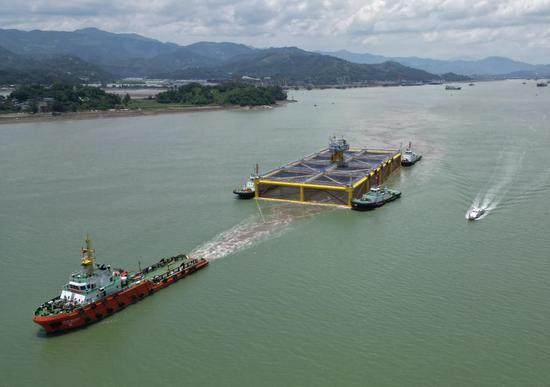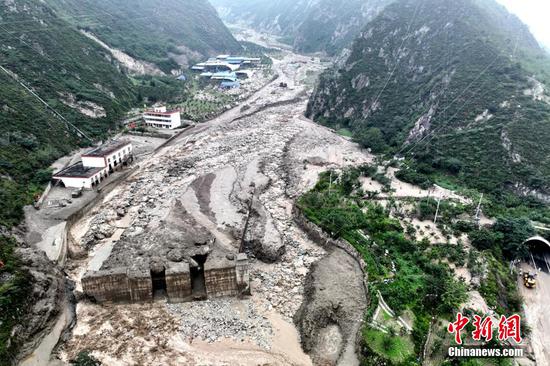Domestically developed weather satellites and technology have played a pivotal role in China's real-time monitoring of the melting of the Greenland ice sheet, according to scientists with Sun Yat-sen University in Guangzhou, Guangdong province.
Marking a step forward for the nation's research and understanding of polar climate and ocean change, the team's results showed that the largest ice body in the Northern Hemisphere has begun seasonal surface melting, with the amount of thawing ice nearing the average of previous years.
Data suggested that from May 31 to early June, the ice sheet's surface was melting rapidly. On May 31, about 133,000 square kilometers of ice sheet surface were melting, or 7.6 percent of the total area.
The loss of ice is about the same as the average of previous years, not a noticeable change, according to the university.
The university's Key Laboratory of Stereoscopic Observation and Application of Polar Environment has been observing the situation with the Chinese-made satellite Fengyun 3D and analyzing data with the university's monitoring system.
By the end of September, a significant portion of the Greenland ice sheet refreezes. However, recent years have witnessed a concerning trend of net ice loss.
A prominent contributor to rising global sea levels is the inflow of meltwater from the surface of the Greenland ice sheet into the ocean. Consequently, it becomes crucial to continuously and swiftly monitor changes in the freezing and thawing of the polar ice sheet surface, and identify extreme anomalous events. These efforts are essential for advancing understanding of the rapid transformations occurring in the polar climate.
Tracking the freezing and thawing patterns of the Greenland ice sheet is vital for several reasons. First, it helps assess the overall health and stability of the ice sheet. The net ice loss observed in recent years indicates a potential decline in the sheet's mass, which could lead to significant consequences for global sea levels.
Second, studying extreme anomalous events provides insights into the dynamics and vulnerabilities of the ice sheet, enabling scientists to better predict and prepare for future changes.
This knowledge is essential for informed decision-making regarding climate change mitigation and adaptation strategies, particularly in relation to rising sea levels and their potential impacts on coastal regions worldwide.
"The flow of meltwater from the surface of the Greenland ice sheet into the ocean is one of the main causes of global sea level rise. As a result, it is important to continue monitoring the situation in order to better understand the rapid changes happening in the polar climate," said Cheng Xiao, a professor from Sun Yat-sen University's School of Geospatial Engineering and Science and also director of the laboratory.
In recent years, the ice sheet has been losing ice.
According to satellite observations from the Gravity Recovery and Climate Experiment, a joint partnership between the United States and Germany, from 2002 to 2021 Greenland lost around 280 gigatons of ice annually, leading to a global sea level increase of 0.8 millimeters per year.


















































 京公网安备 11010202009201号
京公网安备 11010202009201号